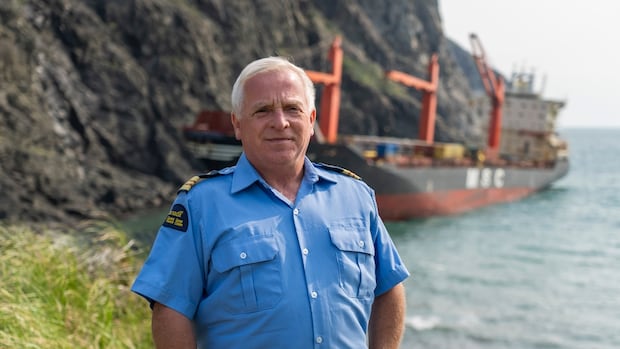A small team of paddlers has set off this spring, travelling 1,200 kilometres by canoe and portage from Tadoussac, Que., to James Bay. They’ll be reviving an ancient route traced by fur traders and Indigenous guides centuries ago.
“We don’t have big political statements in this expedition. We just want meet people,” said Bruno Forest, an author, canoe guide, event organizer, and cultural mediator who’s leading the expedition. “We think that the canoe is a way that First Nations and ourselves can meet on that ground.”
The “À La Mer Du Nord” team includes a core group of eight individuals from different communities and with various skills: a fisher, a cook, a veteran, a journalist, and Indigenous land guides. Other paddlers will join the group at various points along the way.
Their journey began last Saturday and they’re aiming to reach Waskaganish, a northern Quebec Cree community, by mid-August, making stops in several Indigenous communities.
For Forest, simply traveling the route is not enough — he wants to deepen the connection to old knowledge, reminiscent of the fur traders. To achieve this, he collaborated with Lionel Tremblay and Allain Gallant of Les Canots Tremblay to construct traditional cedar canoes.
“The time of wooden canoes is passed. But the artisans that built them, the youngest of them is 80 years old today, and the oldest is 95. So it’s a very old and precious knowledge,” said Forest.
The canoes are heavier and more fragile, but they move silently on the water, which does not scare away fish.
“It is such a piece of art. There’s something that we can’t quantify… with the wood, with the beauty of the canoe, of nature. And there’s a poetry and that, and I think that’s a value in itself,” said Forest.

George Diamond, who’s originally from Waskaganish and is part of the local elders’ council there, appreciates the group’s efforts to retrace the old fur trade route. For him, watching others take up the paddle offers an opportunity to reflect on the spirit of shared paths and shared pasts.
“The way I looked at this canoe trip, it could be a reconciliation project,” said Diamond. He plans to organize a welcome event for the brigade in Waskaganish.
Proud legacy of canoe-making
Diamond says the journey shines light on the cultural pride and legacy of canoe-making in his region.
“We’re very proud of our history as canoe makers of James Bay, because that was the main means of transportation in the past. Our people used our rivers as highways,” said Diamond.
Waskaganish was home to the Rupert House canoe factory, a Cree-operated facility that thrived in the mid-20th Century. This factory produced large wood-and-canvas freighter canoes.

“All these paddling routes, our ancestors and voyageurs took together. There are so many of them. And this happens to be just one of the main ones. They paddled all over Quebec,” said Diamond.
“This route was something that our people had to learn to survive on [during] the fur trade,”
Diamond also emphasized the often-unrecognized labour and knowledge Indigenous peoples brought to the trade networks.
“A lot of Cree people who came down the river were guides — they guided the first fur traders, and the Cree did all the heavy lifting,” said Diamond.
To reach inland areas, the fur traders had to go through Rupert House, where the Cree men collected supplies like sugar and flour. They would then transport these goods to Nemaska Post and Mistissini, something they did for a long time in the early 1900s, according to Diamond.
He said he’s looking forward to hearing about the expedition group’s experiences this spring and summer.
“It’s not an easy trip…there is going to be some hardship, but they seem to be so ready. I hope that they will be successful,” said Diamond.
He also hopes the exchange is mutual — that the paddlers will take back not only memories but a deeper understanding of the land and its people.

“We should learn from each other. I’m sure that these paddlers are gonna learn quite a bit about our history as they paddle down,” said Diamond, adding that tea, bannock and berry jam will await them when the brigade arrives in Waskaganish.
The terrain is very different from what it was 200 years ago, according to Forest. He anticipates that the most challenging parts of the journey will be the waves of cold salt water from James Bay and winds strong enough to halt the group.
Additionally, powerful upstream currents may force the team to portage instead. Since some portage trails no longer exist, the team will need to cut down trees along the way.
“I see an expedition as a choreography. When you are in the expedition, you just accomplish what was planned and deal with the things that were not programmed,” said Forest.
The team will invite community members to a day of activities during their stopovers. Children and youth can try out canoes, test portage gear, and learn about the old fur trade routes.
“We always hope that people from different communities will come to join us and share their stories. We bring what we have, but we want to learn from people there too,” said Forest.
“We will be able to learn all about this long history that the Cree Nation has with the canoes, brigades and nomadic travels.”
Forest expects it will be a “changing experience” for the paddlers.
“It’s just reconnecting with so much important things in nature and in the culture,” he said.







